
Family matters have necessitating me driving to Tauranga twice in the past couple of weeks and on each of those four road trips, I have been struck by how interesting our northern entrance (and exit) is in terms of landscape. The same can not be said for the road to the south, unless you are a keen dairy farmer, but that northern access will never get boring for me. Sure, the roads are not streamlined highways but I don’t mind the twists and turns because a lower driving speed gives more opportunity to take in the surroundings.
For those who are geographically ignorant of this area, Tauranga is about four and half hours drive time and takes me from the farthest reaches of the west coast northwards and right across the island to the east coast.
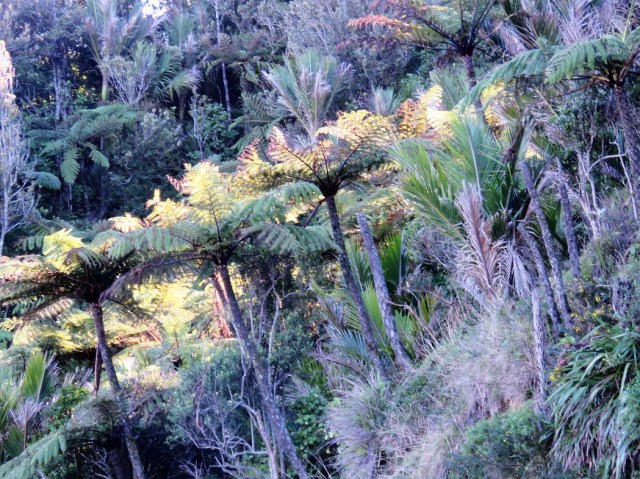
From the Uruti Valley just up the road from us and Mount Messenger (more hill with windy road than actual mountain), we enter ponga – native tree fern – territory but I didn’t stop to photograph them until I reached Tongaporutu. There, the regenerating native bush has a heady mix of nikau palms and pongas which are distinctively New Zealand in flavour.

The view of the Tongaporutu tidal estuary is one that is near and dear to my heart. Mark’s parents built a bach there back in the late 1950s which we took over for a number of years. A bach, you may ask? A bach is the North Island term for what is called a crib in the South Island – modest precursors to what is now known as the more upmarket holiday house. This is an area that I know well. You may notice the black sand – iron sands are a feature of the Taranaki coastline. The sand gets so hot in summer that all locals know to wear footwear and – I am not exaggerating – if you take your dog to the beach with you, you have to carry the poor dog over the dry sand to avoid burning the pads on their feet! On sunny days.

I love the folded hills just north of Tongaporutu and never more so than in the early morning or late afternoon light.

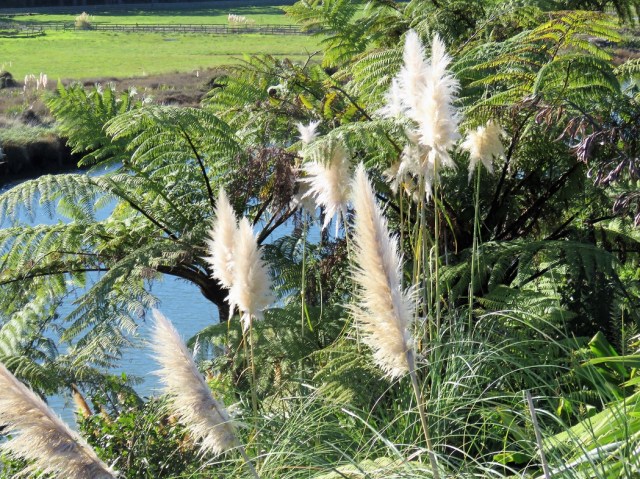
Let’s talk about Argentinian pampas grass. Again. I saw them flowering all the way from Taranaki to Tauranga and there is no doubt that those fluffy duster blooms are gloriously eyecatching at this time of the year. But goodness, it is a dangerously invasive weed. From memory, I think the Taranaki Regional Council had an eradication policy on it several years ago – as in, it was illegal to even have it growing. But it seems they gave up on that as an unrealistic goal and these days it is just banned from propagation and sale, as opposed to requiring compulsory removal. You can certainly see the effects across the countryside, nowhere more so than on the hillside immediately south of the Mokau bridge. It is rampant.
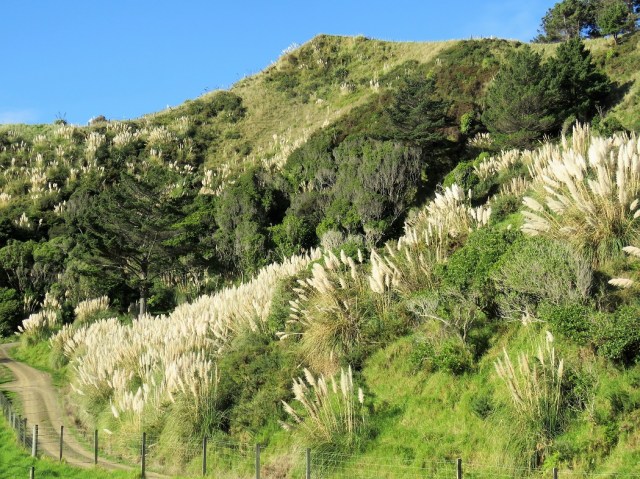

One popped up in my twin borders here and I have no idea where it came from because there are certainly none of the cream form growing anywhere near us. Presumably the seed blew in from quite some distance away or it may have come in with another plant. I dug it out as soon as it became clear what it was. While we grow some ornamental plants that environmental purists raise their eyebrows at (campanulata cherries, agapanthus, Stipa tenuissima, Lilium formasanum, for starters), they are all plants that we can and do control from spreading. Pampas grass is in a different league altogether. It doesn’t matter how pretty it is in flower and seed head, we don’t want such a dangerously invasive plant in our garden.
Once through the Awakino Gorge, we leave the coastal forest and sea behind to head inland and the countryside changes dramatically. This photo doesn’t do justice to what suddenly appears as big country, called the King Country – sparsely populated hillsides receding into the distance as far as the eye can see. It is a grand landscape in its own style.
The papa rock, or blue grey mudstone, of coastal Taranaki changes to the limestone rock of Waitomo. I have never heard the name of this limestone valley with its distinctive cliff faces and rock formations just north of Mahoenui, but I always look forward to it. In another life, I would love to have bought a tract of land here simply to plant and landscape an appropriate garden around those strong rocky features. That might have been a fun project.

Next up is Te Kuiti, a small country town where I always stop for a coffee at Bosco’s. It being a two hour drive from here, it seems the right time to break the journey. Besides the coffee, it is the line of original railway cottages that grab my attention. It started as a railway town and these cottages were built up and down the country by NZ Rail, in its heyday.
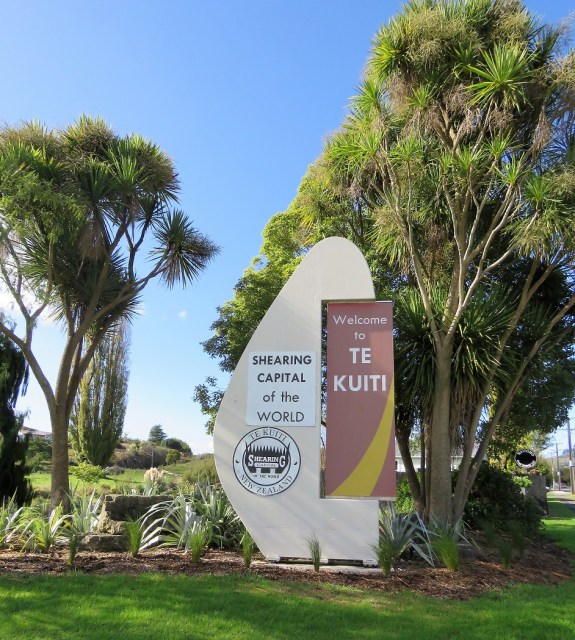

These days, Te Kuiti prefers other branding removed from its railway history. From the north, it declares itself as the shearing capital of the world which is a fair indication that its farming history lies in sheep, not cattle. From the south, however, it lauds its most famous son – Colin Meads. He was one of our most revered rugby players. I always notice this sign and finally, in the interests of research, I turned off the bypass to go and find the statue. It was a little… smaller than I expected. But I am not a follower of rugby.

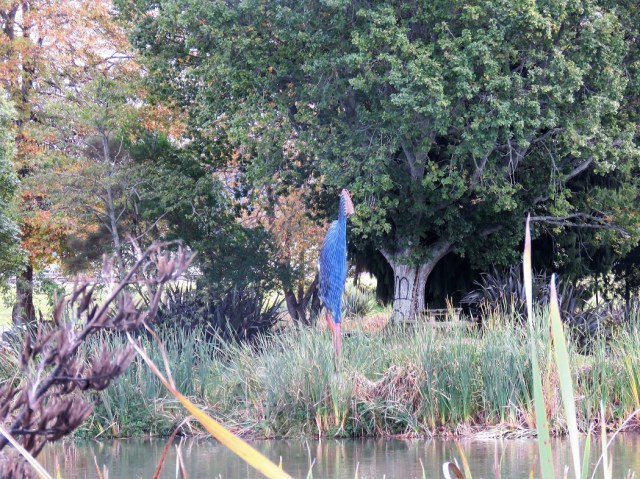
To be honest, I like the giant pukeko in Otorohanga, the next town up the line, more though I didn’t get the angle quite right to show the scale. You have to go on the heavy traffic bypass to find this unexpected sight. The pukeko is an Australian swamphen. It is uncertain whether it introduced itself to these isles or whether it was brought here by the first Maori who arrived in canoes but its arrival dates back many hundreds of years. Today it is equally admired for its gawky character and remarkable survival skills and loathed for the destruction it can cause in gardens and in agricultural situations. We have a little pukeko colony in the North Garden and I like them for both their character and the fact that they live in the ornithological equivalent of a village and raise their young in creches where responsibility is shared amongst the adult birds.
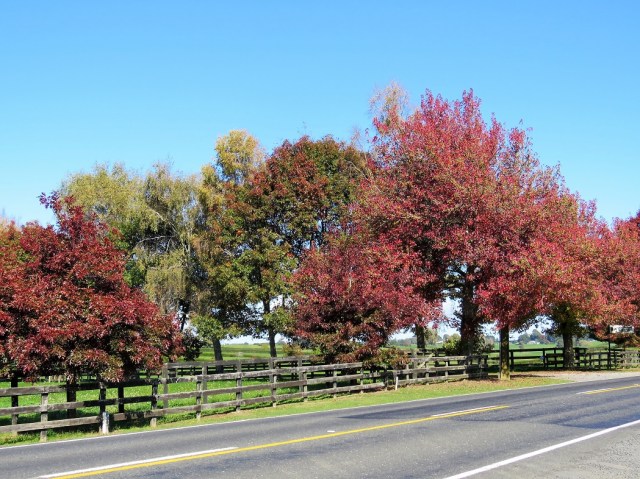
And so to the Waikato where the landscape becomes quite tame and managed again (dairy and equestrian country) and the autumn colours are beautiful at this time of year. Being inland, they get cooler nights and the sharp drop in temperatures which triggers deciduous trees to change colour. The roads are straighter, wider and better formed as befits the sharp increase in traffic density. From here, I concentrate more on safely negotiating the heavy traffic than in observing the passing countryside.
On the return journey, I breathe again and relax as I turn off the busy roads to head down the more interesting roads home.

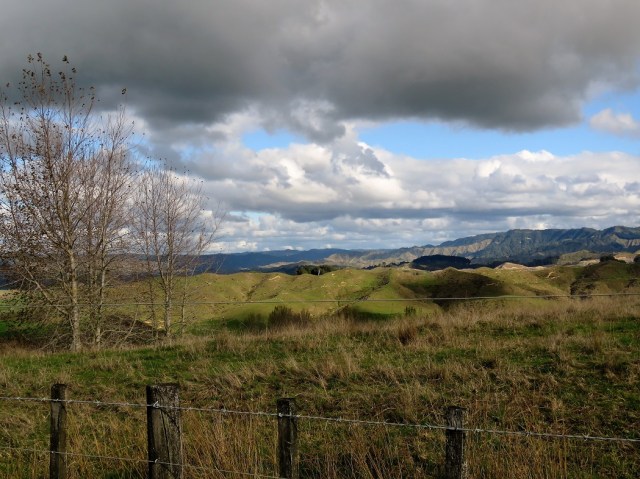
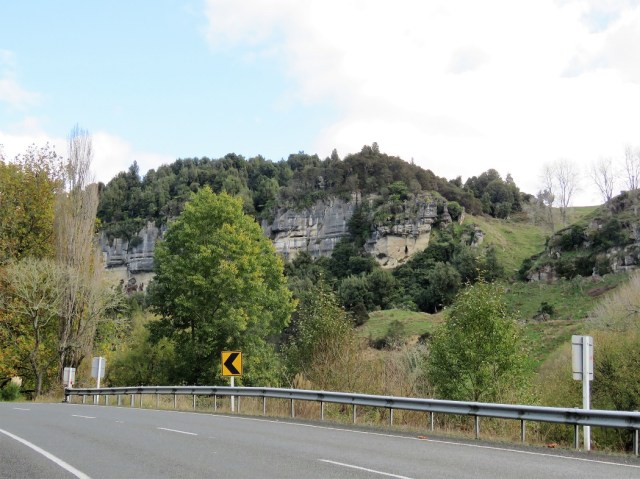
Well, that was a lovely drive! But ye gods! That pampas is a worry!
You are right about the pampas! That particular drive is an interesting one, unlike other drives I have done in my life.
Oh goodness, what memories your latest article brought back of our 2 wonderful NZ roadtrips. Thank you.
Will we ever cross the world again to your wonderful country? Who can tell. It was an inspiring and happy time.
I am picking 2023 before the world reopens to quarantine-free traffic but the impact of climate change on our former free-wheeling ways of international travel is yet to be seen.
What an extraordinarily beautiful country, Abbie.
The spectacular scenery of the well known spots – particularly in the South Island, get most attention and justifiably so, but plain, ordinary countryside around here is not without its charms and interest.
Your “ordinary countryside” strikes me as being so very beautiful.
I love that folded hills photo. So often we just blat past things without noticing them.
Exactly! That is why I don’t mind roads that need me to drive more slowly. After all, when we are driving in the UK, we set the sat nav to avoid motorways because it takes us down all the back roads and country roads. Driving becomes a journey, not a race to reach the destination.
Having lived in Te Kuiti for a major part of my life these are roads I was very familiar with. The limestone gorge is in the Mangaotaki region, also famous for some Hobbit film scenery. It still takes my breath away. Also can recommend that the Bosco coffee break warrants a look in the opposite direction from the railway cottages toward Brook Park, and maybe take a walk there. I was involved in years of tree planting there – its history is worth reading about. Thank you Abbie for prompting some good memories.
I like that these are shared memories. I will take some time out and look at Brook Park next time.